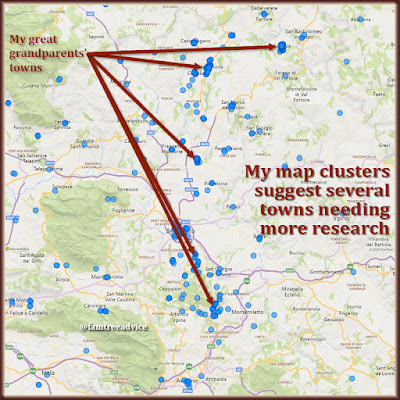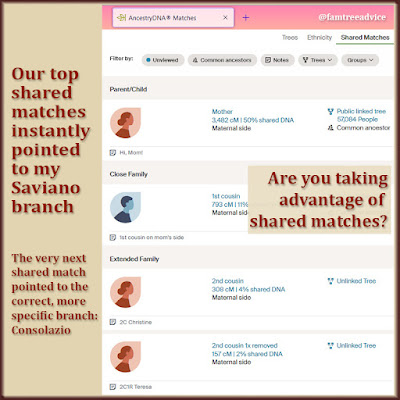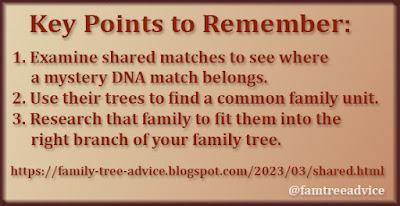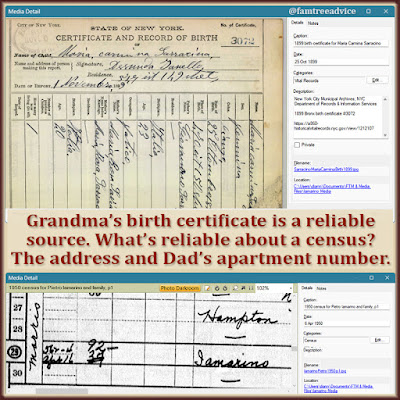Some family history myths never seem to die. Perhaps the biggest one is "my ancestor's name was changed at Ellis Island." Despite what you see in "The Godfather" or its parody "Mafia!" (where they rename an immigrant boy Vincenzo Armani Windbreaker), it didn't happen.
Ask yourself this. When you board an airplane, does the airline know your name and home address? Yes, they do. If you board a cruise ship, does that company know who each passenger is? Absolutely yes.
In fact, they recorded everyone's details at the port of departure and gave them a basic inspection. It was in the shipping company's best interests to turn away anyone who would be rejected in New York. Why? Because the company had to pay the return fare for any rejected immigrant.
East Coast Immigration
Visit the Ellis Island Foundation online to see 5 videos that detail your ancestor's immigration experience. Here are some of the key points from these educational and informational videos.
1. The immigration process is much more difficult now that it was when your grandparents arrived. For the most part, all you had to do was arrive, have a place to go, and not have a contagious disease. The entire process happened within hours.
2. The medical inspection lasted a few seconds. The staff had an average of 6 seconds to look at an immigrant and decide if they were healthy enough. They checked for one contagious eye disease called trachoma that was a big problem at the time. To do this, they had to turn the immigrant's upper eyelid inside out to look for bumps. If the person was sick, they might stay in the building's dormitory until they recovered.
 |
| During the Ellis Island years, European immigrants went through a relatively speedy entry process. |
3. Ships had a manifest with each passenger's name and information when they arrived. They turned the manifests over to the Ellis Island officials. In the Great Hall of Ellis Island, people waited in line for hours to speak to an inspector. Translators were there to assist. The inspectors asked questions to see if a passenger's answers matched what was on the ship manifest. They asked questions like, "Where are you going?"
4. About 1 in 10 immigrants also had to go before a board of special inquiry. They had to wait in the dormitory for their hearing. After answering several more questions, the majority passed and went on their way. In fact, Ellis Island denied entry to only 2% of immigrants.
Of course your ancestor came here legally. It was so easy to do.
West Coast Immigration
The Ellis Island videos mention that their immigrants came from Europe. Asian immigrants arrived at the Angel Island Immigration Station in San Francisco. My husband's Japanese ancestors arrived there. Recently I found the manifest showing his grandmother Hanako's detention at the facility.
 |
| Asian immigrants faced a longer, tougher entry process at Angel Island in San Francisco. |
I found her on a page filled with woman who had 2 things in common:
- Many had a rubber stamp next to their name that says Photograph Marriage. We all believed Hanako was a "picture bride," but she denied it. Now we have this proof as well as what seems to be the actual photograph.
- Most of the people on the page had uncinariasis, also known as hookworm. Officials labeled these immigrants as having a "dangerous contagious disease." The people were all detained, treated, and released. Many of the contagious picture brides are also labeled L.P.C.: likely public charge. That seems odd when they had an arranged husband to meet them.
It looks as though they held Hanako for 18 days before her husband took her to her new home.
Immigration was much harder at Angel Island because of prejudice against Asians and the Chinese Exclusion Act. If there were European immigrants arriving in San Francisco, they received preferential treatment. Officials processed their papers aboard the ship so they could disembark and be on their way. This was also true of 1st and 2nd class passengers at Ellis Island.
Unlike Ellis Island, the Angel Island immigration process didn't take hours. It took weeks, months, or sometimes years.
It's important to understand the experience of your immigrant ancestors. I often think of my great grandmother Maria Rosa, who made the 3-week voyage while she was 6 months pregnant. It sounds nauseating! Or my grandfather Pietro, who arrived at age 18 after somehow getting from southern Italy to a port in France. Or my grandfather Adamo, who first arrived in 1914 as a 23-year-old, but had to return to Italy to fight in World War I for the Italian Army.
They all made long, difficult journeys, and most seemed to decide to never speak about it again. Take some time to understand the journey your ancestors made. You know you owe everything to them.
To learn about the Ellis Island immigration process, view the 5 videos at https://www.nps.gov/elis/learn/education/eie-series.htm.
To learn about the Angel Island immigration process, see the History Channel page at https://www.history.com/topics/immigration/angel-island-immigration-station.
And speaking of immigration:











